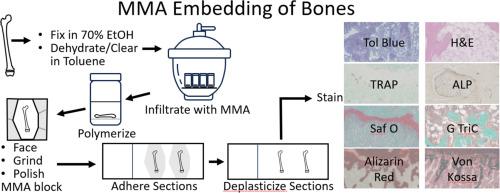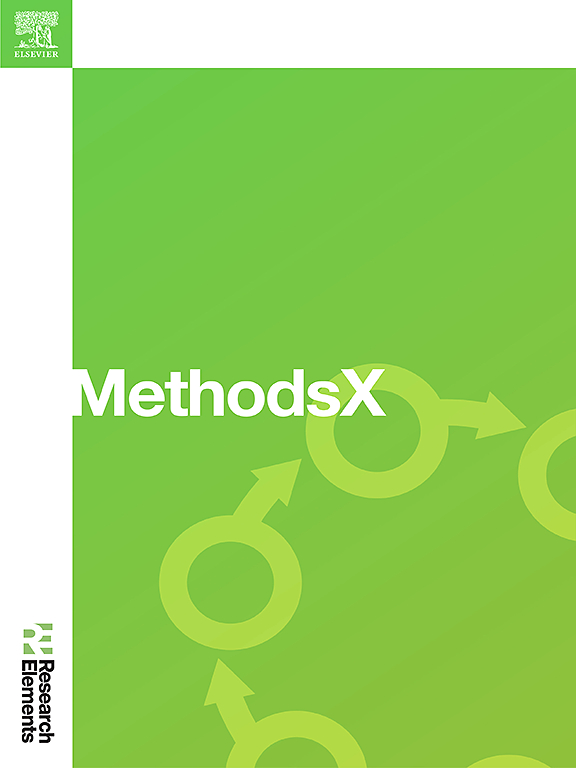优化甲基丙烯酸甲酯包埋大小未钙化骨骼。
IF 1.6
Q2 MULTIDISCIPLINARY SCIENCES
引用次数: 0
摘要
甲基丙烯酸甲酯(MMA)塑料包埋作为一种对骨骼进行处理和组织学评估的技术由来已久。与石蜡相比,它的优势在于不需要对组织进行脱钙处理就能观察到细胞细节,从而保留了有关未矿化骨质以及骨骼矿化程度的重要信息。它还能通过保留骨中的荧光标签,进行动态组织形态分析。硬组织的有效浸润对于骨骼的处理和制作高质量的切片至关重要,这样才能在另一端获得可用的可量化组织学结果。该技术:-更新了之前发布的 MMA 包埋方案,以反映稳定丙烯酰胺的使用情况(而不是过去的非稳定试剂)-概述了包埋小型(麝香)、中型(鼠)和大型(猪、袋鼠、人)组织学样本的重要技术。本文章由计算机程序翻译,如有差异,请以英文原文为准。

Optimized Methyl methacrylate embedding of small and large undecalcified bones.
Methyl methacrylate (MMA) plastic embedding has been long established as a technique for the processing and histological assessment of bones. It provides the added benefit over paraffin in that it does not require decalcification of the tissue in order visualize the cellular detail, thus preserving vital information about the amount of unmineralized osteoid present in addition to the degree of mineralization in the bone. It also allows for the incorporation of dynamic histomorphometric analysis through the retention of fluorescent labels incorporated into the bone. Efficient infiltration of hard tissue is essential to the processing of bones and producing quality slides suitable for achieving usable quantifiable histology out the other end. This technique:
- •Updates previously published MMA embedding protocols to reflect utilization of stabilized acrylamides (over the unstabilized reagents of the past)
- •Outlines the techniques that are important for embedding both small (mus), medium (rattus), and large (porcine, lagomorph, human) histological samples.
- •Updates the clearing and infiltration processes utilized and validates quality of the sample preparation though histological staining to confirm preservation of cellular detail, mineralization information, and enzymatic activity
求助全文
通过发布文献求助,成功后即可免费获取论文全文。
去求助
来源期刊

MethodsX
Health Professions-Medical Laboratory Technology
CiteScore
3.60
自引率
5.30%
发文量
314
审稿时长
7 weeks
期刊介绍:
 求助内容:
求助内容: 应助结果提醒方式:
应助结果提醒方式:


